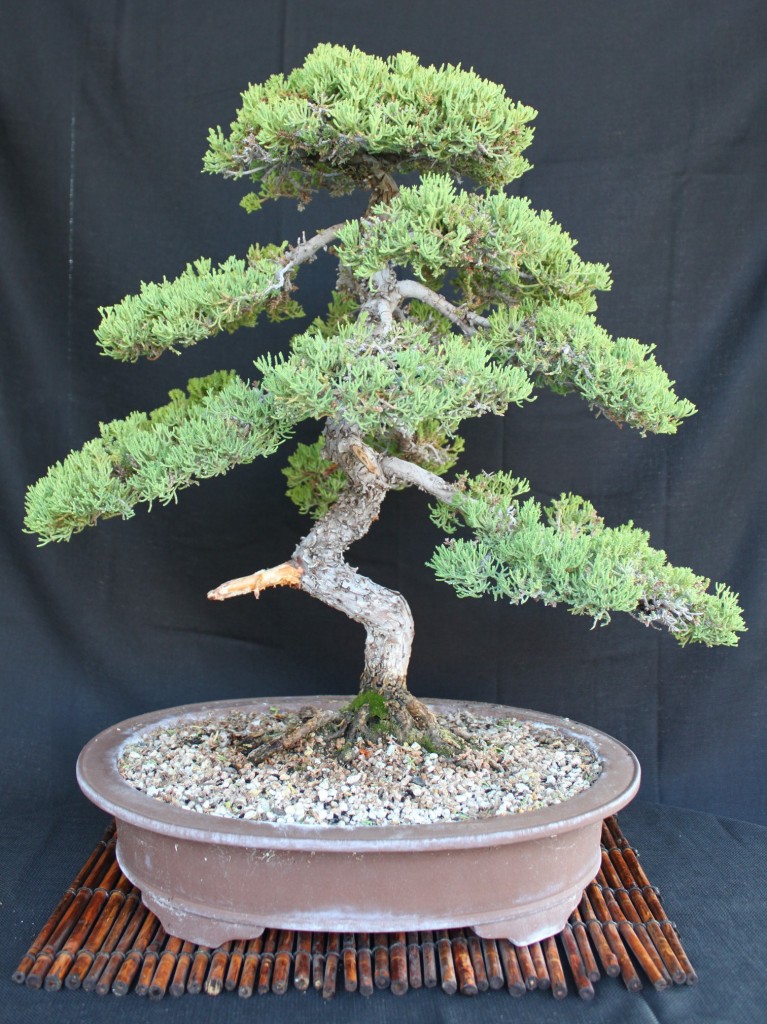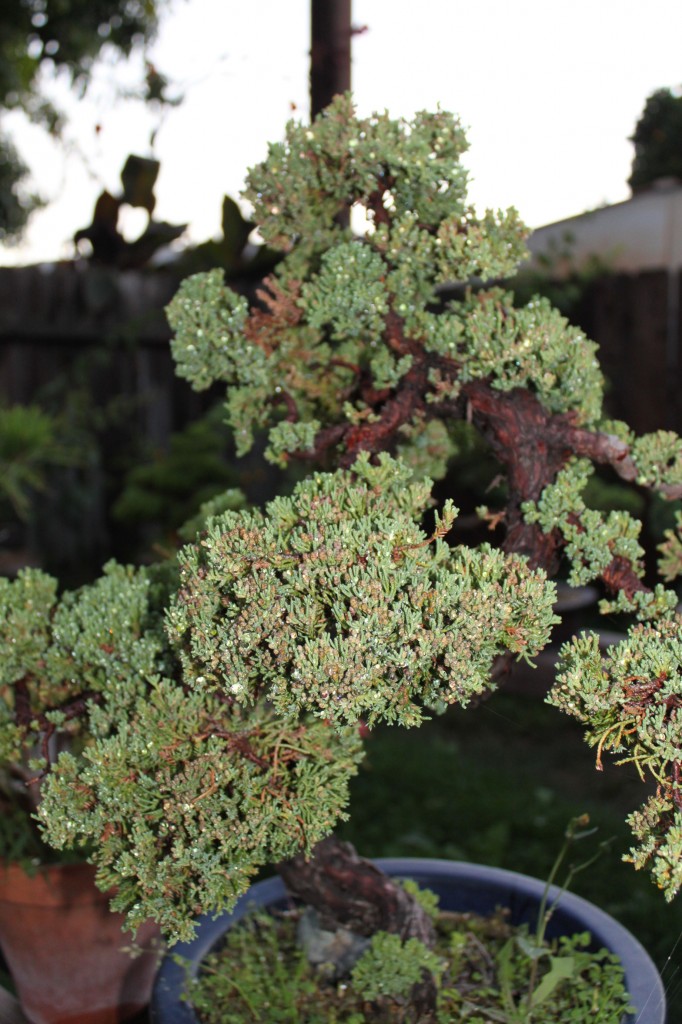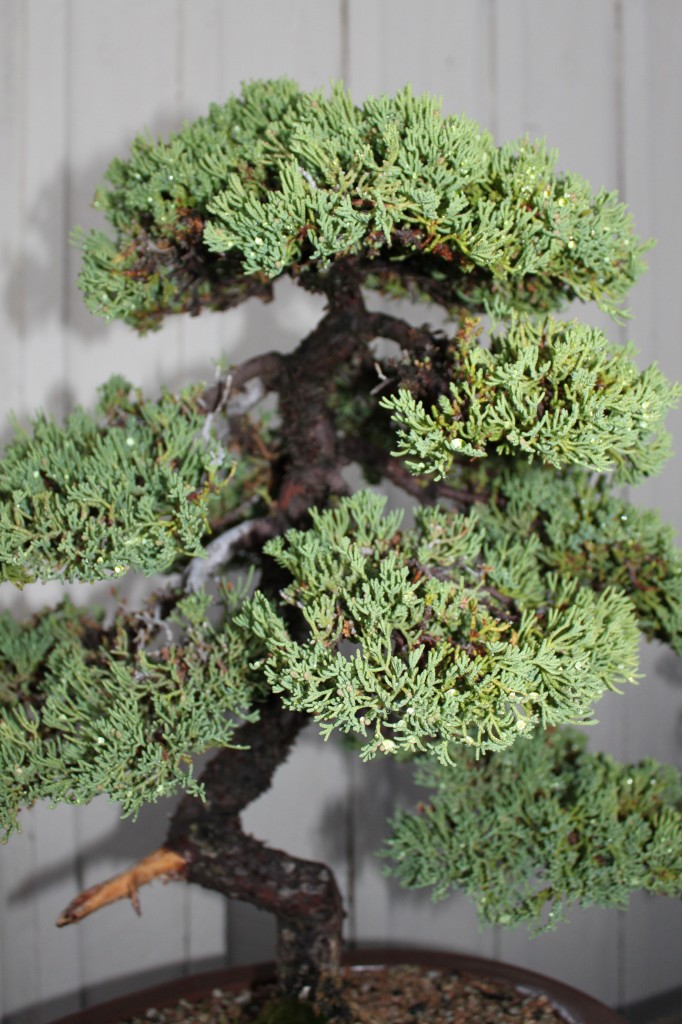Japanese Juniper Bonsai
Japanese Juniper Bonsai Care and Creation (Or, How to Bonsai a Garden Juniper)
Are you a beginner, curious about bonsai? Or maybe you are a deciduous tree enthusiast who decided to branch out, as it were. Or maybe you have no background in bonsai, but you saw the juniper bonsais in the store or the nursery – and you resisted buying one, because they are expensive, or because they are difficult to care for, or due to the fear of the tree dying. Well, here is how to have a beautiful Juniper bonsai, for only a small amount of money.
Background:
The term “Japanese Juniper” generally refers to a specific variety of Juniper: Juniperus Chinensis var. Procumbens, or just Juniperus Procumbens. This variety of Juniper is native to coastal regions in Japan, but is now grown in just about all temperate parts of the world as an ornamental or landscape plant. They are easily found in nurseries throughout the United States.
Selection and Acquisition
Juniperus Procumbens Nana, cis ommonly known as the Japanese Garden Juniper or the “Green Mound” Juniper. You cannot collect one from the wild, but if you are very lucky, you may have a neighbor who is removing one or more of them from a landscape. They are sold for ground cover, but they get woody after a while – bad for the landscape, good for bonsai. These Junipers are sold in landscape nurseries, and in the garden department of your local “big box” hardware store for use as ground cover. They come in one, two, three, and five gallon sizes, but the one gallon will make a fine small bonsai. For a larger bonsai, use a three or five gallon tree.
Stake Training (Or, How to Get An Upright Bonsai from a Ground Juniper)
You do not need bonsai wire for this exercise. The Japanese used to use bamboo and twine to train their bonsais, and we can do something similar. While you are at the nursery, get a plant stake – the kind you would use to stake up a tomato plant. Get some plant ties as well. You should also try to find a wide plastic flower pot or a bulb pot. The ideal pot should be twice as wide and half as high as the one gallon pot your juniper comes in. A lot of home stores now carry a nice selection of glazed and unglazed ceramic pots in the garden departments. You can use one of these if you want. Or you can buy a nice bonsai pot. For a Juniper, a brown or grey unglazed pot is preferred. While you often see bonsai junipers in stores and online in blue glazed pots, bonsai enthusiasts never put a juniper in a glazed pot. They save the glazed pots for flowering plants and deciduous trees with fall color.
Pruning and Shaping
Now that you have lugged your treasure home, take it out of the nursery pot. Find a strong upper branch to form the upper trunk of your tree. Use the pruner (or your shears) to trim away the undergrowth. If this is your first tree, just prune it into a shape that looks like a tree. Do not be too concerned with style. If you want to make a single trunk upright tree, cut away all the lower branches and leave one strong upper branch. Then tie the upper branch to the stake with the plant ties, to keep it upright. If you are an advanced enthusiast, you know what to do.
Potting
Now mix your potting soil, sand, and pea gravel (or whatever you use as aggregate) in equal parts in a bucket. This is your bonsai soil. Comb out the roots of the juniper with a cultivator, and trim back any overly long roots with the pruner. Now pot the tree in the bulb pot, place it on your patio, and enjoy it.
Feeding and Watering
The author typically waters every day in hot weather, every other day in the spring and fall, and every third day in the winter. The easiest fertilizer to use is a time release granular fertilizer, such as Osmocote. Sprinkle a tablespoon full on the soil, and the watering will do the rest. In a few weeks, when the fertilizer granules disappear, add more. If you can find them, organic fertilizers carry more punch. Sprinkle some blood meal on top of the soil during the growing season, and you will see vigorous growth.
In a year or two, when your new tree fills out its branches, then you can repot it into a proper bonsai pot. You will have something much better than what is for sale at the mall, and best of all, you created it yourself.



